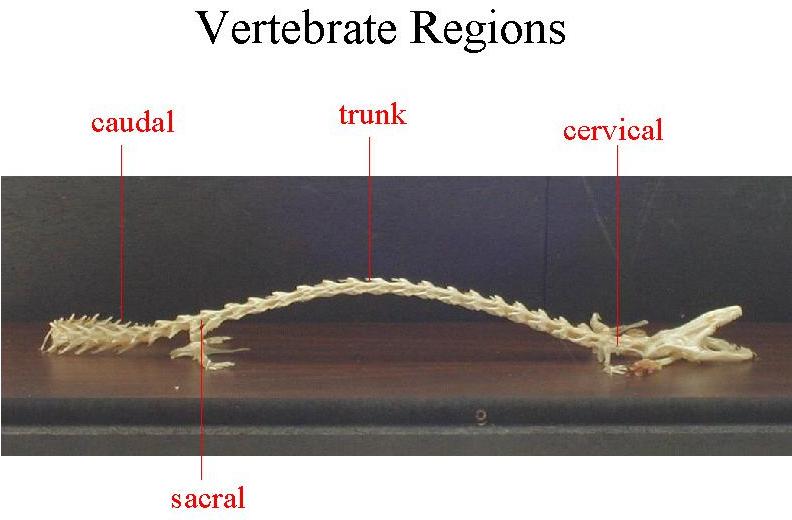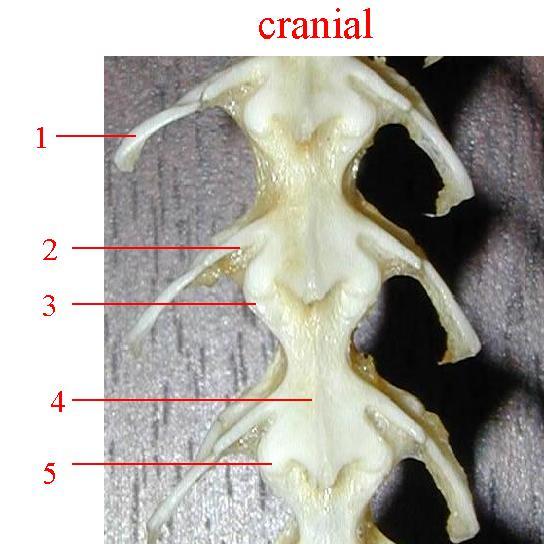Necturus Axial Skeleton
With the movement to
land the vertebral column became more important in locomotion and in maintaining
posture. Thus, amphibians have more completely ossified vertebrae
than do fishes. Overlapping zygopophysis, which can be seen in the
Necturus skeleton, holds these vertebrae together. The postzygopophysis
of one vertebra lies on top of the prezygopophysis of the next. The
centrum shape of the Necturusâ vertebrae is amphicoelous,
the centrum on both sides of the vertebrae is concave. The arrangement
of the zygopophysis and the centrum shape allow for lateral bending but
prevent vertical bending. The movement from water onto land
was the primary factor in regional specialization of the axial skeleton
over evolutionary time. As the first terrestrial vertebrates lost
their gills and the bony connection between the skull and pectoral girdle
developed, the evolution of the neck began. The development of the
neck in early tetrapopds is due, in large part, to the introduction of
the cervical vertebrae, which allowed for increased mobility of the head.
This allowed them to scan the environment for predators and prey more easily.
The regional specialization continues with the development of the one sacral
vertebra, which is a modification to withstand the push against the earth.
The trunk vertebrae stretch between the cervical and sacral vertebrae and
serve as attachment sites for the ribs. The
Necturus ribs
are short, primitive ribs. The ribs do have two heads, the caput
and tuberculum, which continues to be seen in later vertebrates as well.
The last type of ribs seen on the
Necturus is the caudal vertebra,
which lack ribs and bear hemal arches as seen in Squalus.

Vertebrae (dorsal view)

1 Rib 2 Transverse process 3 Prezygapophyses 4 Vertebral arch 5 Postzygapophyses